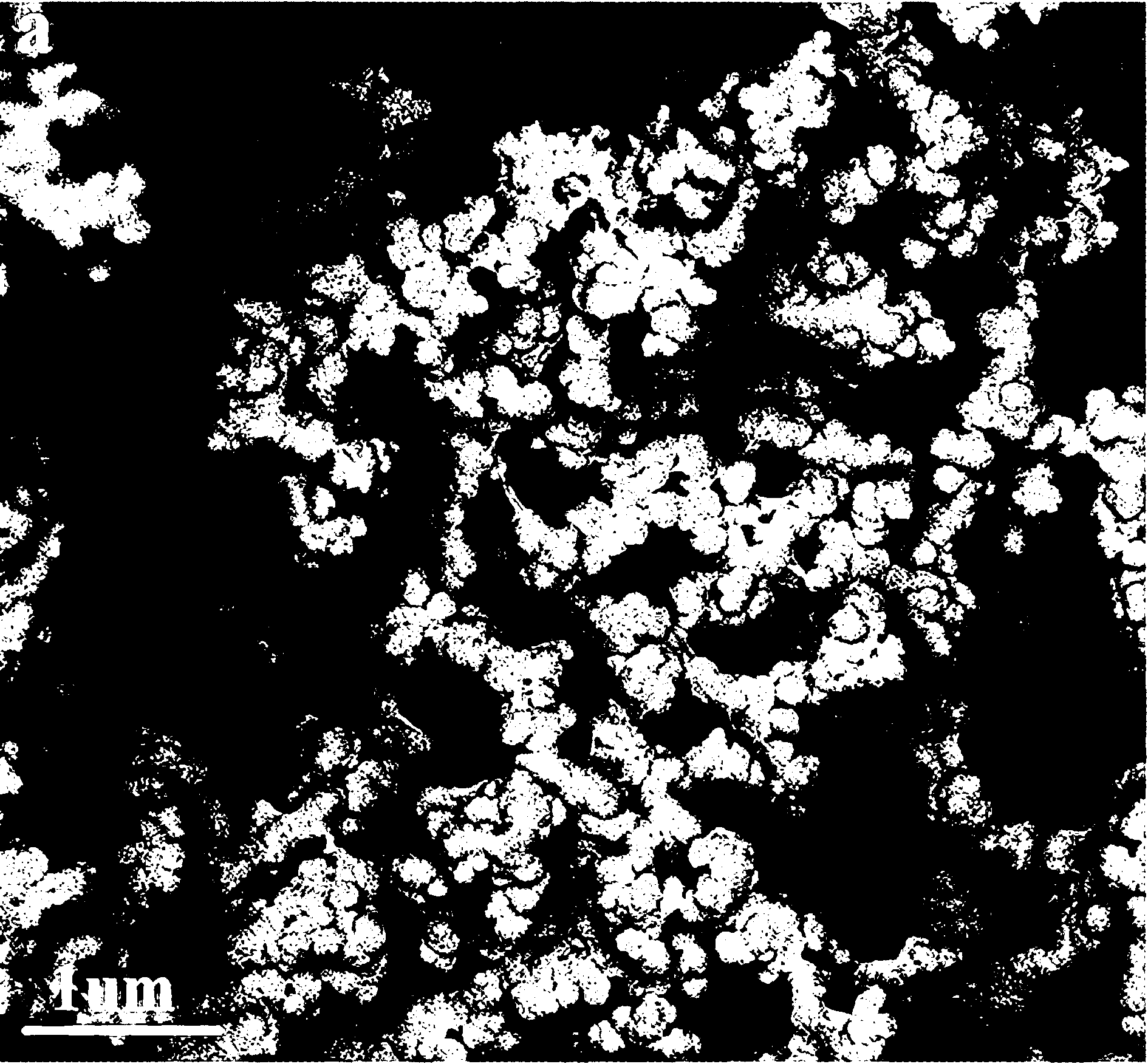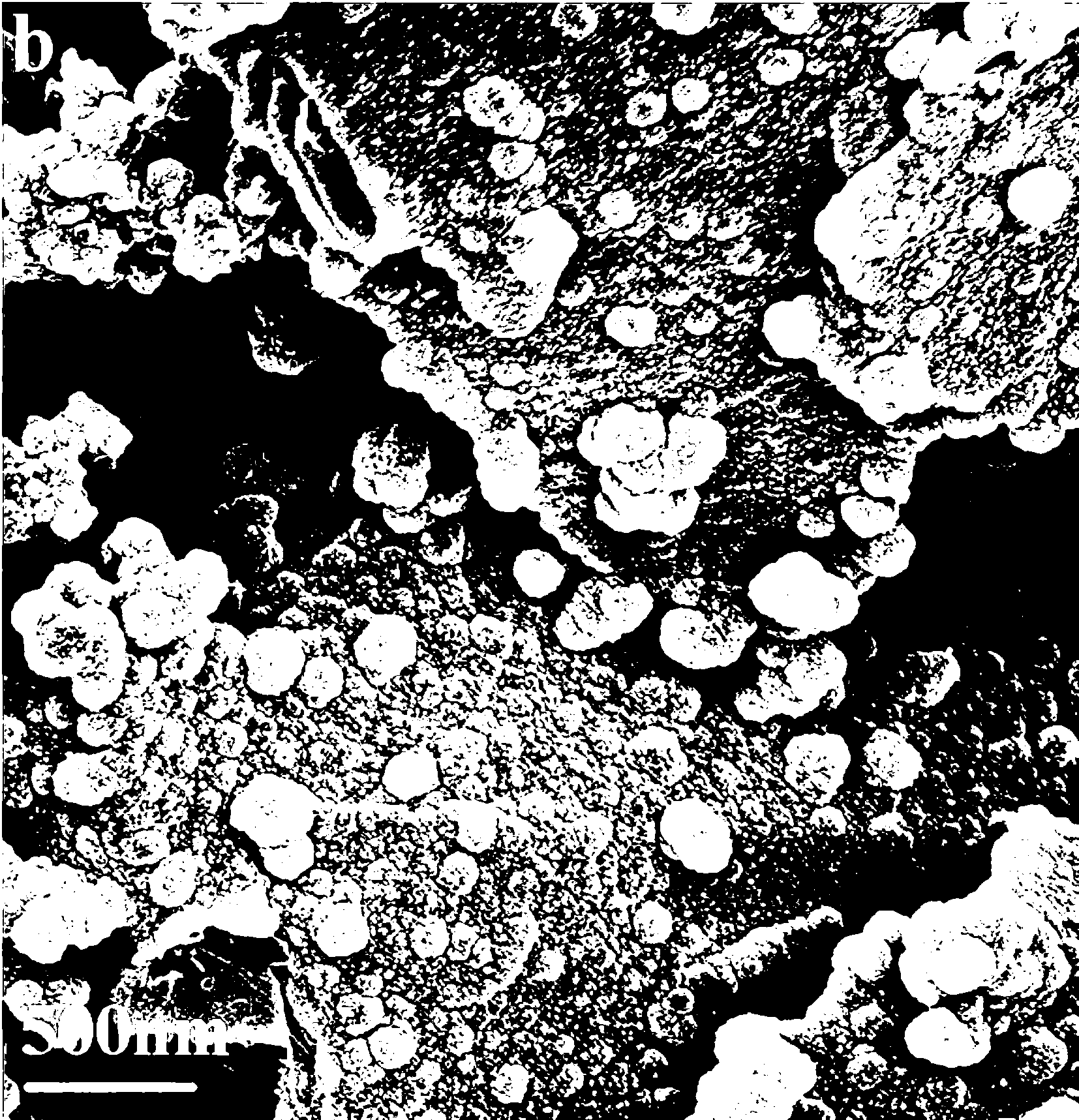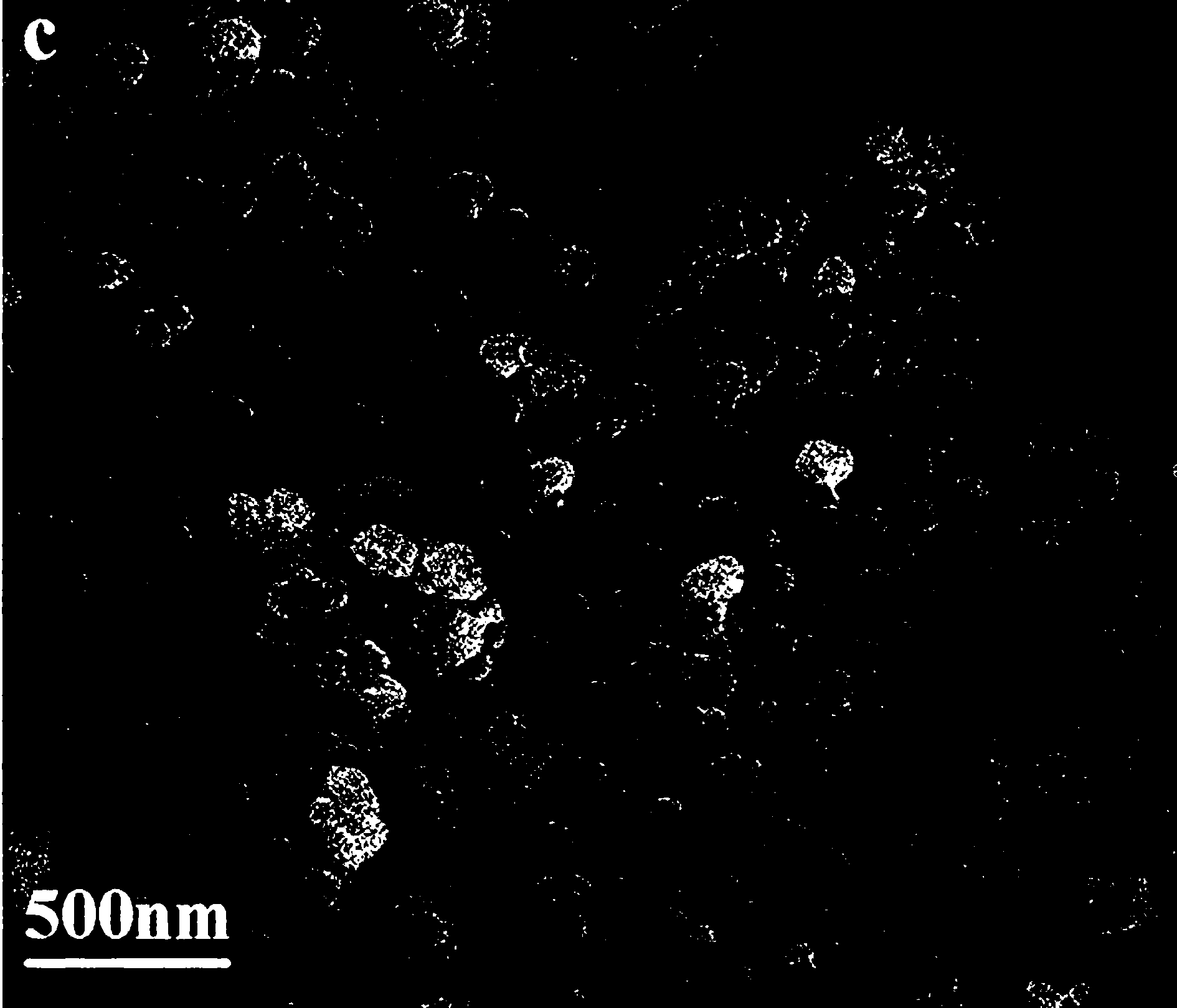Preparation method of polypyrrole/graphene sheet/nickel oxide nano composite conductive material
A graphene flake and nanocomposite technology, which is applied in the field of composite materials, can solve the problems of polypyrrole, such as brittle texture, infusibility, insolubility, and non-processability, so as to improve the electrical conductivity and solve the effect of agglomeration
- Summary
- Abstract
- Description
- Claims
- Application Information
AI Technical Summary
Problems solved by technology
Method used
Image
Examples
Embodiment 1
[0031] ① Preparation of graphene flakes (GNS): Weigh 1 g of 200-mesh expandable graphite, place it in a muffle furnace, and expand it at a temperature of 950-1050°C for 10-15 seconds to obtain expanded graphite. Then use o-dichlorobenzene as a solvent, ultrasonically peel the expanded graphite for 3~4 hours, filter, wash, and dry to obtain GNS.
[0032] ②Preparation of nano-NiO: Add 50mL 0.2mol / L NiSO in a three-necked flask 4 ·6H 2 O, heat up to 70~80°C under ultrasonic conditions; adjust the pH value to about 10~12 with 0.4mol / L KOH solution, continue the ultrasonic reaction for 3~5h; cool for 6~12h, centrifuge, and wash repeatedly with distilled water until there is no SO 4 2- (with BaCl 2 inspection), finally washed with absolute ethanol, dried for 24 hours, ground, and then calcined at 350°C for 1~2 hours to obtain NiO with a particle size of 1~3nm.
[0033] ③Preparation of PPy / GNS / NiO: Take 0.015g GNS, 0.05 g NiO, 0.5g pyrrole monomer and 1 ml polyethylene glycol-400...
Embodiment 2
[0036] The preparation of nano-GNS and nano-NiO is the same as in Example 1.
[0037] ③Preparation of PPy / GNS / NiO: Take 0.016g GNS, 0.1 g NiO, 0.5g pyrrole monomer and 1 ml polyethylene glycol-400 in the reactor, add 6~10mL absolute ethanol, and ultrasonically disperse it evenly; Under ice bath conditions, add 0.4g p-toluenesulfonic acid, continue ultrasonic dispersion for 5min; add 50mL 0.34mol / L FeCl 3 solution, ultrasonically reacted for 2 to 4 hours, stood overnight, filtered with suction, washed until the filtrate was colorless, and dried to obtain a PPy / GNS / NiO conductive composite material.
[0038] The conductivity of the PPy / GNS / NiO conductive composite is 14.49 S / cm.
Embodiment 3
[0040] The preparation of nano-GNS and nano-NiO is the same as in Example 1.
[0041] Preparation of PPy / GNS / NiO: Take 0.028g GNS, 0.5g NiO, 0.5g pyrrole monomer and 1ml polyethylene glycol-400 in a reactor, add 6~10mL absolute ethanol, and ultrasonically disperse it evenly; Under the condition of ice bath, add 0.4g p-toluenesulfonic acid, ultrasonically disperse for 8min; add 50mL 0.34mol / L FeCl 3 solution, ultrasonically reacted for 2 to 4 hours, stood overnight, filtered with suction, washed until the filtrate was colorless, and dried to obtain a PPy / GNS / NiO conductive composite material.
[0042] The conductivity of the PPy / GNS / NiO conductive composite is 24.39 S / cm.
PUM
| Property | Measurement | Unit |
|---|---|---|
| particle diameter | aaaaa | aaaaa |
Abstract
Description
Claims
Application Information
 Login to View More
Login to View More - R&D Engineer
- R&D Manager
- IP Professional
- Industry Leading Data Capabilities
- Powerful AI technology
- Patent DNA Extraction
Browse by: Latest US Patents, China's latest patents, Technical Efficacy Thesaurus, Application Domain, Technology Topic, Popular Technical Reports.
© 2024 PatSnap. All rights reserved.Legal|Privacy policy|Modern Slavery Act Transparency Statement|Sitemap|About US| Contact US: help@patsnap.com










